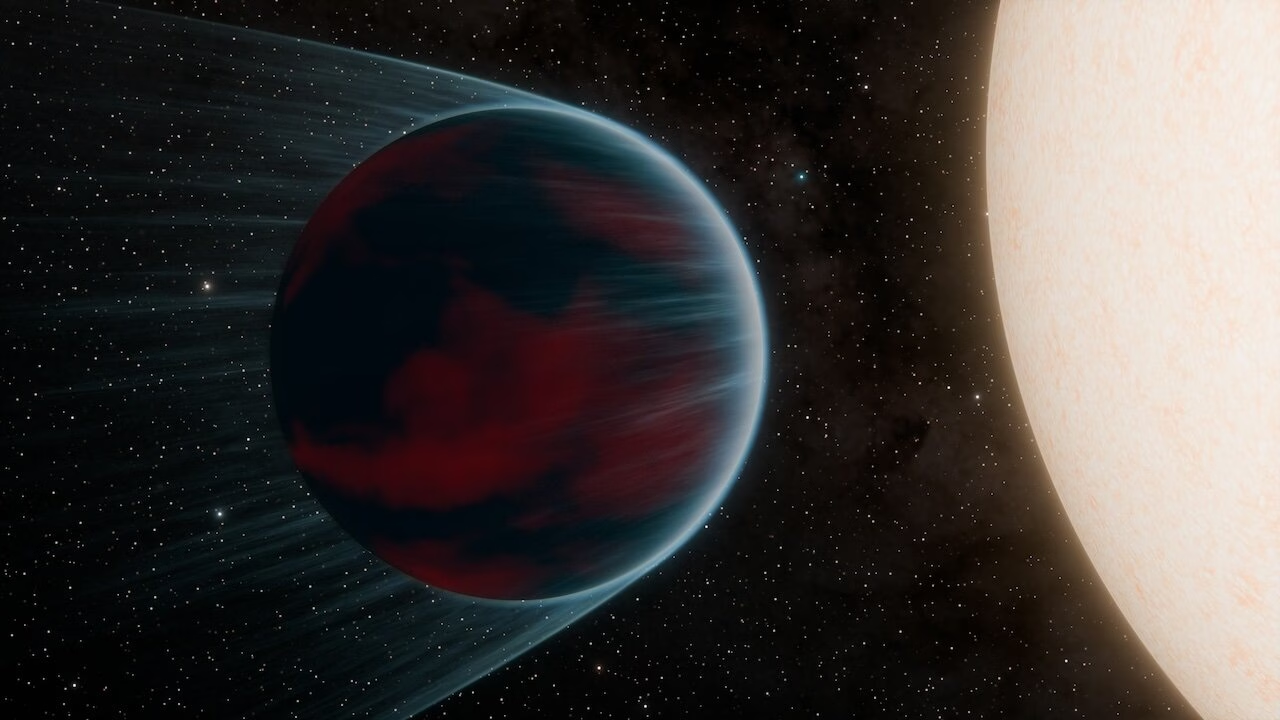Astronomers discover “hot Neptune” in tight orbit
- November 27, 2024
- 0
TOI-3261 b, a Neptune-sized planet, has an extremely close orbit around its host star. The planet, only the fourth object of its kind, may reveal clues about how
TOI-3261 b, a Neptune-sized planet, has an extremely close orbit around its host star. The planet, only the fourth object of its kind, may reveal clues about how

TOI-3261 b, a Neptune-sized planet, has an extremely close orbit around its host star. The planet, only the fourth object of its kind, may reveal clues about how such planets form. An international team of scientists used NASA’s TESS (Transiting Exoplanet Search Satellite) space telescope to detect an exoplanet (a planet outside our solar system) and then conducted additional observations using ground-based telescopes in Australia, Chile, and South Africa. . The measurements place the new planet squarely in the “Neptunian hot desert”; This is a category of planets with very few members, the scarcity of which gives the impression of a desolate landscape.
A team led by astronomer Emma Nabby from the University of Southern Queensland published the discovery paper titled “Surviving Neptune’s Hot Desert: Discovery of Ultra-Hot Neptune TOI-3261 b.” Astronomy Magazine In August 2024.
This type of exoplanet is similar to our Neptune in size and composition, but orbits extremely close to its star. Also, a “year” in TOI-3261 b lasts only 21 hours. Such a narrow orbit places the planet in a special group with only three members so far: ultra-short-period hot Neptunes whose masses have been measured accurately.
The planet TOI-3261 b turned out to be an ideal candidate for testing new computer models of planet formation. One of the reasons why hot Neptunes are so rare is that it is difficult to have a dense gaseous atmosphere this close to the star. Because stars are so massive, they exert a large gravitational force on objects around them, which can loosen the layers of gas surrounding a nearby planet. They also release large amounts of energy, blowing up layers of gas.
Both of these factors mean that hot Neptunes such as TOI-3261 b may have initially become much larger Jupiter-sized planets and have since lost much of their mass. By modeling different starting points and development scenarios, the science team determined that the star-planet system is approximately 6.5 billion years old and that the planet was originally a much larger gas giant.
However, it likely lost mass in two ways: photoevaporation, in which energy from the star causes gas particles to scatter, and tidal dissipation, in which the star’s gravitational pull clears the planet of layers of gas. A planet can also form further away from its star, both of these effects being less intense and allowing it to retain its atmosphere.
The remains of its atmosphere, one of the planet’s most interesting features, will likely require further analysis of the atmosphere and perhaps help elucidate the history of the formation of this inhabitant of the “hot desert of Neptune.”
Planet TOI-3261 b is about twice as dense as Neptune; This suggests that the lighter parts of its atmosphere have been stripped away over time, leaving only the heavier components. This suggests that the planet must have started out with many different elements in the atmosphere, but it’s hard to tell exactly which ones at this stage.
This mystery could be solved by observing the planet in infrared light, perhaps with NASA’s James Webb Space Telescope; This is an excellent way to see the identifying fingerprints of different molecules in a planet’s atmosphere. This will not only help astronomers understand the history of TOI-3261 b, but will also begin to reveal the physical processes behind all the hot giant planets.
The first discovery of the ultra-short-period hot Neptune LTT-9779 b occurred in 2020. Since then, TESS discoveries TOI-849 b and TOI-332 b have also joined the elite ultrashort-period hot Neptune. Club Neptune (with precisely measured masses).
Both LTT-9779 b and TOI-849 b are suitable for infrared observations with the James Webb Space Telescope, potentially expanding our understanding of these planets’ atmospheres in the coming years.
Source: Port Altele
As an experienced journalist and author, Mary has been reporting on the latest news and trends for over 5 years. With a passion for uncovering the stories behind the headlines, Mary has earned a reputation as a trusted voice in the world of journalism. Her writing style is insightful, engaging and thought-provoking, as she takes a deep dive into the most pressing issues of our time.